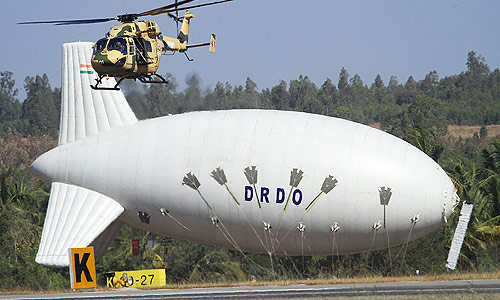Four years after, the Aerial Delivery Research Development Establishment (ADRDE) indigenously developed "Akashdeep", a medium sized Aerostat (an unmanned helium-filled airship) system for aerial surveillance, the Agra-based Laboratory run by Defence Research and Development Organisation (DRDO) has completed trials of another Aerostat called "Nakshatra". Nakshatra is an improved version of Akashdeep with a surveillance range of up to 100km, is ready to be inducted. When inducted, Nakshatra will be deployed along the Pakistan border to keep a close watch on infiltrators.
Nakshatra can carry equipment such as sensors, radars and other surveillance equipment, weighing up to 300 kg. It is fitted with high-definition infrared cameras for detailed shots for both day and night vision. This device can remain airborne for 14 days before requiring a helium refill. It has been primarily developed for watching sensitive borders, and can conduct 360-degree surveillance from a height of up to 1km.
This system has already completed its trial in all weather conditions and is ready to get inducted and deployed along the Pakistan border. Only a handful of countries, such as the USA, Germany, France, Israel and Japan have developed such systems.
India is presently using an imported aerostat provided by Israel which can see up to 250 km. The made in India Nakshatra-1 has reduced the cost by 1/4 compared to the imported one from Israel. Nakshatra makes use of new technologies related to balloon design, fabrics, etc and is a step forward in the 'Make in India' drive. The Agra-based LAB has already started working on Nakshatra-2 with more improved sensors and a range of up to 250 km. Source
Stay tuned for more updates! Jai Hind!


